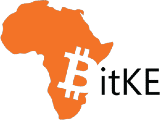NFTs or non-fungible tokens are cryptographic assets that hold metadata and identification codes hosted on a blockchain.
Unlike fungible tokens, NFTs cannot be exchanged or used for commercial transactions, and cannot be replicated. NFTs work as a representation of individual identity, property rights, artwork, and real estate. By turning these assets into tokens (tokenization), non-fungible tokens make buying, trading, or selling these real-life items more tangible and reduce the risk of fraud.
Some key applications we have already witnessed include NFTs being used to connect artists with their audience, create new market demographics and remove intermediaries.
As it stands, NFTs are centered around collectible items such as rarities and digital artwork where they add several qualities to this sector:
- They are unique in the cryptographic
- They cannot be replicated or equal to another token
- Have a non-transferable identity
- Are extensible, meaning the combination of two unique NFTs can produce a third unique NFT
Outlook for NFTs
Total trading volume on the 5 leading NFT marketplaces fell by -77% in the third quarter of 2022 as the sector firmly remains in ‘NFT winter,’ a recent CoinGecko report indicated.
Based on the report, the total market cap of the NFT sector has experienced a huge decline from as high as $13.5 billion in Q12022 to $2.1 billion in the third quarter.
However, the bear market is not a strong reason to dismiss NFTs or cryptocurrencies for that matter.
Since Bitcoin was established in 2009, cryptocurrencies and NFTs have had several cycles of suppressed activity like this, only to bounce back. When the market bounces back, it can lead to even more opportunities like Defi which began to take shape in 2020, and NFTs in 2021.
However, besides trading and speculation, the NFT sector remains a promising sector experiencing a wave of innovation from all corners of the world. The idea lends itself to many interesting use cases:
1.) Equity-based NFTs
If we delve deeper, we could consider the possibility of NFTs not only surviving but becoming more vital and popular as the crypto markets expand.
They may become tokens that can be used for purchasing stocks or real estate as well as digital assets. An example of this in action is by Orbeon Protocol which has built a kind of blockchain investment platform. This lets startups raise capital from investors rapidly whilst also connecting with the web3 world.
In the system, investment opportunities are turned into NFTs and fractionalized, allowing investors to buy into startups through these NFTs at prices as low as $1.
2.) Proof of Attendance (POAP) NFTs
Proof of attendance NFTs, often shortened to POAPs, based on the protocol that popularized the term, function as digital badges you can collect at events, both to prove that you were there and to remember the occasion.
This type of NFT introduces the idea of exclusivity to the digital world using a smartphone application.
Since they are supposed to be collectible they are made to conform to a standard visual format and protocol. To qualify as a POAP, a token has to be minted through a POAP smart contract protocol, and in addition, must have a cryptographic record of the time or date of the event it was created for.
At the event, attendees get to scan a QR code that unlocks their NFT which is not only unique but also immutable and can be a memento of having been at the event, besides being used for provenance. These NFTs are also replacing mailing lists and helping artists to manage fan relationships and loyalty.
POAPs, which got conceived at a hackathon in 2019, have received an endorsement from Ethereum founder, Vitalik Buterin:
In addition to carbonvotes, I'd support POAP votes and gitcoin quadratic votes.
— vitalik.eth (@VitalikButerin) February 24, 2020
3.) Tokenizing Physical Items
Tokenization is when physical consumer items have important data represented by metadata encoded into an NFT.
In Africa, the NFT platform Momint has tokenized old historical coins(Krugerrands) into NFTs which can be fractionalized for sale at cheaper prices. While the physical coins are owned by Scoin, a jewelry business in South Africa, users get part-ownership by acquiring fractionalized NFTs.
Businesses and companies also stand a chance to gain from secondary sales when their products are linked to NFTs. This works by encoding royalties to the NFT smart contract programming a certain percentage from a secondary sale to go back to the original business behind a product.
Companies can also link their products to NFTs acting as digital receipts with way more potential benefits. Such receipts can improve product transparency to customers by providing more info about what they are purchasing. For instance, the NFTs can contain information that verifies the product’s authenticity and indices where the product has been sourced.
This can increase buyer confidence while also addressing the issue of counterfeit products.
_____________________
Follow us on Twitter for latest posts and updates
Join and interact with our Telegram community
_____________________
_____________________








